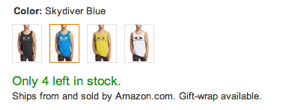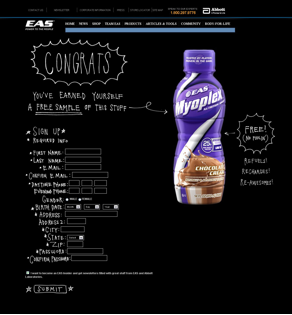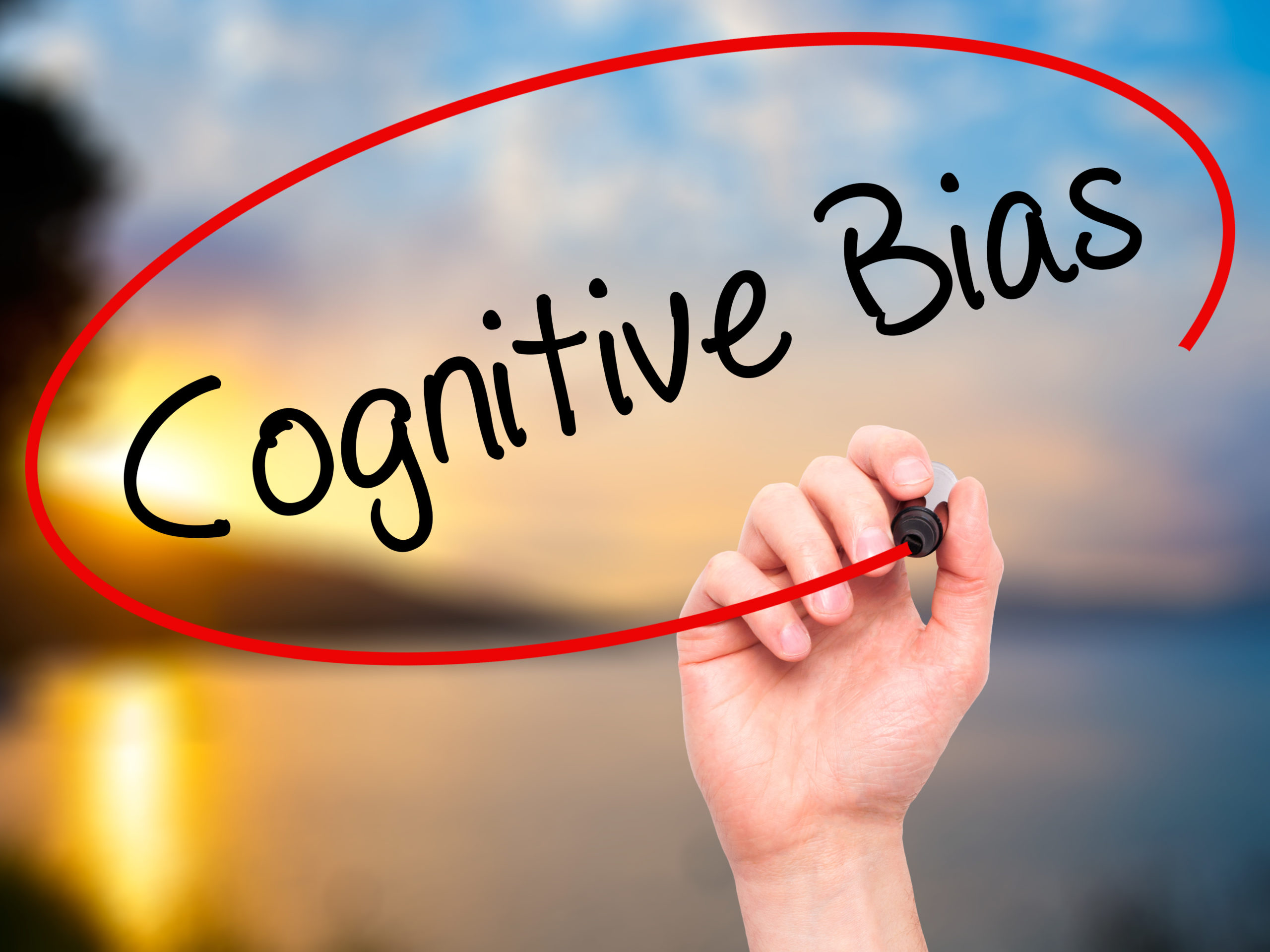As human beings, we like to consider ourselves to be rational, intelligent creatures who have the ability to make well-informed decisions and to champion our own destinies.
And to a certain extent, this is true—we have the ability to do these things. However, our decisions are often fueled by irrational thinking, with cognitive biases influencing our behaviors, as if we were mere puppets acting in accordance to the string-pulling of our emotions.
Our brains make mistakes. They judge. They like to take shortcuts, also known as heuristics, to process information more quickly. And our brains are swayed by biased and circumstantial factors.
So how then are marketers supposed to effectively persuade customers to take action? If people made purely rational decisions or took only rational action, this would be a piece of cake. But how do marketers navigate irrational thinking, cognitive biases, and emotions to increase their conversions?
First thing’s first: You need to understand what the concept of cognitive bias is referring to.
What Is Cognitive Bias?
According to Shanelle Mullin of Conversion XL, “Cognitive bias is the tendency to think certain ways, often resulting in [a] deviation from rational, logical decision-making. It’s studied most often in psychology and behavioral economics, but it’s present in all areas of life.”
Often caused by social attributions, memory, or statistical errors, cognitive biases are prevalent in all humans and they frequently adhere to clear and predictable patterns.
Also, the sheer amount of cognitive biases that affects us on a daily basis is astounding (a full list can be found on Wikipedia).
From how we buy and sell, to how we interact with other people and think and feel about particular situations, cognitive biases impact just about every aspect of our lives. And we are often unaware that it’s happening.
Understanding cognitive biases both in ourselves and in other people is a highly useful skill to develop, however, as it can help us make more reliable decisions and nurture a more accurate perception of people and the world.
Plus, from a marketing standpoint, understanding cognitive biases helps you turn the tables and use these “brain tricks” to your advantage so you can better comprehend how both you and your audience make decisions.
Why Are Cognitive Biases Important For Marketers?
Manish Punjabi, co-founder of Conversion Fanatics, shares the following insights:
 Manish Punjabi: “Humans (your customers) have a hard time reconciling psychological biases, especially when making complex (or even simple) purchase decisions. Most people, most of the time, use one or more of these mental ‘shortcuts’ to save themselves from painful mistakes.
Manish Punjabi: “Humans (your customers) have a hard time reconciling psychological biases, especially when making complex (or even simple) purchase decisions. Most people, most of the time, use one or more of these mental ‘shortcuts’ to save themselves from painful mistakes.
People are more interested in protecting their money than they are in buying your stuff, even if they’re reasonably certain it’s going to improve their lives. That’s why they’ll seek group consensus (lots of positive reviews) when making decisions.
That being said, A/B testing should be used as a methodology to reveal your own cognitive biases, not to confirm them, as you most likely have biases when picking test ideas and even winners!”
People do not interact with or think about your website, company, or brand from a neutral standpoint. Anytime visitors arrive at your site or storefront, they do so with a slew of cognitive biases in tow.
And these cognitive biases play an important function regarding the way that customers perceive you and your business and decide to take action.
 Shanelle Mullin: “Cognitive biases affect how your visitors think and feel about your site, about your company. They affect how likely your visitors are to convert to leads. They affect how likely your visitors are to share or talk about your product or service.
Shanelle Mullin: “Cognitive biases affect how your visitors think and feel about your site, about your company. They affect how likely your visitors are to convert to leads. They affect how likely your visitors are to share or talk about your product or service.
Of course, cognitive biases also affect you. They affect your ability to run rational tests, your ability to analyze test results, your ability to sample without pollution, etc.
Disagree? That’s your bias blind spot, a bias that allows you to view yourself as less bias[ed] than other people.
Once you’re aware of the different cognitive biases, you can begin to account for them and limit their impact on your visitors’ thinking (and your own).”
As previously mentioned, Wikipedia has compiled a complete list of cognitive biases. However, not all of these biases directly apply to conversion rate optimization. Therefore, while the complete list is definitely worth checking out, for our purposes, we will concentrate on the biases that most often pertain to marketing and conversion rate optimization.
Anchoring or Focalism
Defined: “The common human tendency to rely too heavily on the first piece of information offered (the ‘anchor’) when making decisions.”
For example, when you are shopping—say for additional ink cartridges for your printer—the first price you encounter (the anchor) sets the stage for what you perceive to be the appropriate cost for a particular item.
So if you are used to paying $25 a cartridge, but you find the ink on sale for $20, you think you’re getting it for a great price, regardless of what the ink actually is worth. Similarly, if you find the same ink cartridge elsewhere and it costs $30, you’re far less likely to purchase the ink because in your mind a cartridge is worth only $25.
How to use Anchoring to influence your marketing and CRO:
People are going to compare your product or offer to others that they’ve found; this is unavoidable. For instance, if a customer comes across one of your competitor’s offering priced at $29 (the anchor) and then finds a similar product listed on your website for $39, that customer will be much less likely to purchase the product from you, regardless of brand loyalty.
Therefore, it’s important to take initiative and get a leg up on your customers’ comparisons, especially when it comes to price.
Bandwagon Effect
Defined: “The tendency to do (or believe) things because many other people do (or believe) the same. Related to groupthink and herd behavior.”

We’ve all heard this question before: “If all your friends jumped off a bridge, would you jump too? Well, apparently a lot of us would, according to the Bandwagon Effect, which explains many of our conforming behaviors, including fashion trends (shoulder pads taking off in the 80s simply could not have been the result of rational thought; that had to be the work of cognitive bias).
How to use the Bandwagon Effect to influence your marketing and CRO:
If your customers perceive that tons of people, especially prominent people (celebrity endorsements) are using your product or service, they will be more likely to use your product or service themselves.
For this reason, it’s important to demonstrate social proof, which you can do by including glowing testimonials and social proof with numbers—for example, “1 million satisfied customers”—close to points of friction (calls-to-action, checkout pages).
By the same token, it’s also beneficial to establish scarcity. As Luke Diaz of Optimizely states, “The perceived rarity of a product or service is positively correlated with inferred value.” To achieve this, you can incorporate a sense of timeliness or urgency into your copy, as illustrated in the image below.

Framing Effect
Defined: A cognitive bias “in which people react to a particular choice in different ways depending on how it is presented; e.g. as a loss or as a gain.”
In order to explore how different phrasing affects people’s responses to a particular situation, researchers Amos Tversky and Daniel Kahneman created a hypothetical life or death scenario and asked participants to select one of two treatment options for 600 people who’d been inflicted by a lethal illness.
The first option (Treatment A) would result in 400 fatalities and 200 survivors, and the second option (Treatment B) had a 33% chance that there wouldn’t be any fatalities but a 66% chance that every single person would die.
Participants were presented with the two treatment options using either positive framing (how many people would survive) or negative framing (how many people would die).

When positive framing was used (“Saves 200 lives”), 72% of participants selected Treatment A. But when participants were offered the same option using negative framing (“400 people will die”), only 22% picked Treatment A.
Joanna Wiebe of Copy Hackers describes the insights that marketers have gained from this research:
- “Negative messages carry negative associations, and positive messages carry positive associations
- Losses are more painful than gains are gratifying (i.e., ‘loss aversion’)
- Small gains on small investments are more gratifying than equivalent large gains on large investments (e.g., ‘Save $2 when you spend $10’ is better than ‘Save $1,000 when you spend $5,000’)
- A sure win is preferable to a possible win (i.e., ‘certainty effect’)
- A possible loss is preferable to a definite loss (i.e., ‘pseudocertainty effect’)”
How to use the Framing Effect to influence your marketing and CRO:
Keeping the concept of “loss aversion” in mind, you want to frame your offers in such a way that your customers feel they will be missing out on a fantastic deal or opportunity, such as “Act now, the 50% off sale ends at midnight!”
In that vein, implementing a rewards system as part of your eCommerce strategy can be highly beneficial in terms of boosting conversions, especially depending on how you frame the reward.
Whether the rewards system occurs in your pricing structure, as a loyalty program, or as a way to elicit additional purchases, it doesn’t really matter what reward you give, as the key lies in framing the reward as a loss instead of as a gain (remember: “losses are more painful than gains are gratifying”).
Jeremy Smith of Marketing Land reports on a study conducted by Simon Gächter et al. to illustrate this concept.
 Jeremy Smith: “Researchers sent emails to Ph.D. students reminding them to register for an economics conference. Some of the emails offered a discount for registering early while the others framed it as a penalty fee for registering late.
Jeremy Smith: “Researchers sent emails to Ph.D. students reminding them to register for an economics conference. Some of the emails offered a discount for registering early while the others framed it as a penalty fee for registering late.
In the end, 93% of the students registered early when a penalty fee for late registration was invoked, while only 67% did so when it was presented as a discount for earlier registration.”
In other words, students were more concerned with having to pay a fee (loss) than they were with receiving a discount (gain).
Von Restorff or Isolation Effect
Defined: “An item that sticks out is more likely to be remembered than other items.”
We tend to notice and better remember things that stand out to us—things that are different or deviate from a pattern.

In the image above, the red Converse sneakers immediately catch your eye amongst the other, blander dress shoes, helping customers better remember the Converse sneakers and promote the idea of Converse being a one-of-a-kind brand that celebrates individuality and self-expression.
How to use the Von Restorff Effect to influence your marketing and CRO:
In terms of your landing page, there are certain elements that you want to stand out, to catch your viewers’ attention—elements such as your call-to-action button.
“Your CTA needs to be prominent. The button needs to lead off the page so your visitors know exactly where they have to click to get what you’re offering.” – Fahad Muhammad
Blending into the background is a job for chameleons and soldiers in camouflage, not call-to-action buttons. CTAs need to be eye-catching so they motivate people to act.
You want this:

You don’t want this:

Picture Superiority Effect
Defined: “Concepts are much more likely to be remembered experientially if they are presented as pictures rather than as words.”
After all, “A picture is worth a thousand words.” We’ve all heard this expression before, and it ties directly into the picture superiority effect.
According to Allan Paivio’s dual coding theory, visual stimuli are dually coded—that is, they produce both a visual and a verbal code. Verbal stimuli, on the other hand, produce only a verbal code. Therefore, pictures have an advantage over words, especially abstract concepts, in that they are cemented into our brains more easily and more often.

Furthermore, images used in conjunction with words are even easier to remember, with the likelihood of memory retention after 3 days increasing to 65%.
How to use the Picture Superiority Effect to influence your marketing and CRO:
Tim Ash of SiteTuners maintains that the visual elements you include on your website—including photos, icons, illustrations, symbols, figures, and logos—shouldn’t be thought of as design elements. Rather, you should think of your imagery as a “communication vehicle.”
 Tim Ash: “Know that your images are communicating more than your text is, cementing themselves into your visitors’ brains as a concrete concept.
Tim Ash: “Know that your images are communicating more than your text is, cementing themselves into your visitors’ brains as a concrete concept.
Also, remember that your images are not only giving your visitors their very first pre-conscious impression of your site, but will also be the lasting memory that stays with them longer than any headline, copy, or call-to-action.
Additionally, incorporating infographics, which combine text and visual information, into your content marketing is an effective means of getting your audience to better remember your company, along with its products or services.
Empathy Gap
Defined: With this cognitive bias, “a person underestimates the influences of visceral drives, and instead attributes behavior primarily to other, nonvisceral factors.”
In other words, we tend to underestimate the role that emotions play both in ourselves in and in other people.
The root of the Empathy Gap is that person-to-person understanding depends largely on one’s own state of being. For example, if you are angry, bitter, or resentful, it’s difficult to imagine what being happy or at peace feels like, and vice versa.
How to use the Empathy Gap to influence your marketing and CRO:
More often than you might think, feelings are used to persuade—a practice that is also known as emotional argumentation, which can be incredibly powerful.
As a marketer, rid yourself of the notion that your customers are rational people and you’re trying to persuade them to do rational things because that is simply untrue. Emotional copy, emotional design, and emotionally compelling calls-to-action are more convincing and effective than those that merely appeal to logic.
Also, be wary of how your own feelings may influence your conversions, as you’re likely to make suggestions or postulations based on emotions and to believe that your customers’ feelings are in line with your own, which may not necessarily be the case.
It’s important to gain an understanding of the emotions connected to your company, brand, offerings, and website by conducting qualitative research and then use that information to create emotionally compelling arguments, which typically operate on four pillars: sadness, anxiety, awe, and anger.
In-Group Bias
Defined: The in-group bias “refers to a pattern of favoring members of one’s in-group over out-group members.”
As humans, we have a strong desire for companionship. And when we’re with members of our social group, we produce oxytocin, a neurotransmitter (commonly considered the “love molecule”) that facilitates the formation of close bonds with our fellow group members.
This leads us to show preferences for the members of our own social circle over other people, towards whom we may feel suspicious or negative, assuming that they are in some way inferior because they aren’t part of our own group.
How to use the In-group Bias to influence your marketing and CRO:
You need to know your target audience like the back of your hand and then design your marketing so that it positions your company and brand in the same group as your prospects.
 Magda Kay: “If your target is a 20-40-year-old single man, [then] speak to him like a 20-40-year-old single man. Show him that you’re similar, that you understand him. Use testimonials of people similar to your target group. Use images and overall design that will reflect that.
Magda Kay: “If your target is a 20-40-year-old single man, [then] speak to him like a 20-40-year-old single man. Show him that you’re similar, that you understand him. Use testimonials of people similar to your target group. Use images and overall design that will reflect that.
There is also a very successful technique in copywriting called Us vs. Them that’s based on the ingroup bias. It’s about positioning yourself with the prospect (Us) and in opposition to others (Them).
For example, if you’re selling a product related to physical fitness, you can position yourself with your prospect and against the diet and exercise industry by highlighting how most products are gimmicks or fads and don’t produce long-term, lifestyle improvements or how they typically promise too-good-to-be-true results and then don’t deliver.
Sometimes, it’s more effective to point out what’s subpar about other products or services as opposed to touting what’s so great about yours.
Conclusion
This list of seven cognitive biases is by no means exhaustive. As previously mentioned, there are dozens of cognitive biases that affect each of us on a daily basis. However, the seven biases described here are some of the most common and relevant biases that affect the marketing and CRO industry.
You need to know how to recognize these biases and operate with the understanding that both you and your customers are much less rationale and much more emotional than you might like to believe.
Once you’ve made these acknowledgments, you can turn cognitive biases to your advantage in your design, copy, calls-to-action, and the tests you run to start turning more prospects into customers.
At their core, marketing and conversion rate optimization are closely tied to psychology. So the more you know about the human brain’s motivations and predispositions, the better equipped you’ll be to persuade and optimize your marketing efforts.
Have something to add? Let us know in the comments.
Be sure to like, share and subscribe.
If you want help with your conversions and discover ways cognitive biases impact your own conversions don’t hesitate to reach out for a no-obligation conversion acceleration session.




